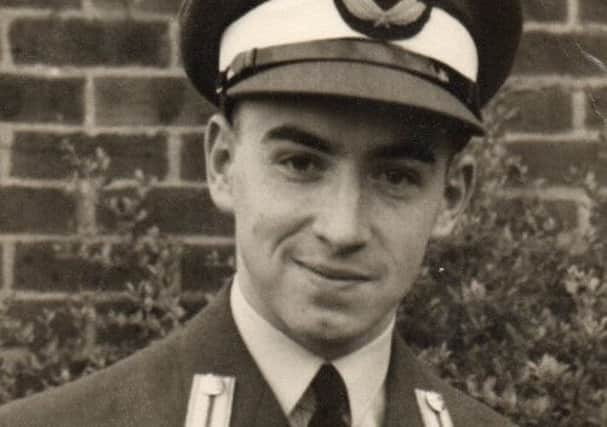Michael Murden


He was an expert in the field of metal fatigue in aircraft structures, contributing significantly to aircraft safety.
A very popular person of loyalty and integrity with a great sense of humour, his life was underpinned by a strong Christian faith nurtured since his schooldays when a fellow pupil had encouraged him to go to Church.
Advertisement
Hide AdAdvertisement
Hide AdMichael Albert Murden was born in Beeston, Nottingham, the elder of two sons of Albert and Norah Murden. His mother worked as a maid for a wealthy Nottingham family, while his father was a decorator by day and a barman by night at the Ye Olde Trip to Jerusalem pub in Nottingham. Later they manged The Kings Head Hotel in Ross-on-Wye.
He was educated at the Henry Mellish Grammar School for Boys,near RAF Hucknall and the Rolls Royce flight test establishment. During most lunchtimes experimental aircraft flew over the playground and it was these flights that helped to influence his decision to join the RAF.
At 14, he joined the RAF section of the school Combined Cadet Force (CCF), and was also Captain of rowing competing in single and twin sculls, fours and eights.
In 1953, he was chosen to lead a team of 25 cadets to visit the United States of America on travelling scholarship, a competition open to every school in Britain which had a CCF. During a visit to Boston, the Mayor when introduced to the young Cadet from Nottingham said: “Gee you must have known Robin Hood.”
Advertisement
Hide AdAdvertisement
Hide AdA week before leaving for America he passed the tests for pilot training as an officer cadet at RAF Cranwell only to fail the medical because of his eyesight. Instead he went to the RAF Technical College at Henlow becoming an engineering officer serving in Bomber Command in the Middle East and the Far East before attending the RAF Staff College.
During the early 1960s he served in Aden with 8 Squadron RAF, a ground attack fighter squadron in what was a difficult time.
As squadron engineer he was in charge of 12 Hawker Hunter aircraft and a large number of technical staff. During that period they lost seven pilots and several aircraft and it was his job to go into the desert to recover the pilots. He discovered the fault causing the crashes and asked for the aircraft to be grounded until it was fixed, but the Air Ministry refused, saying the squadron was a front line squadron and on active service. As a result another pilot died.
Many of his peers felt he was never given the credit for the work he did at that time.
Advertisement
Hide AdAdvertisement
Hide AdHe was later posted back to the UK and in 1965 was promoted to Squadron Leader.
He eventually became an expert on metal fatigue in aircraft, and it was he who found the cracks in the main spars of the Vickers Valiant bomber fleet which led to them all being grounded in 1965.
After a tour in the Ministry of Defence, his final posting was to RAF Kinloss as Commanding Officer of the first Nimrod Major Servicing Unit.
He left the RAF in 1973 for a second career, with the Civil Aviation Authority (CAA) where he was responsible for certification of new aircraft into service and for the continuing airworthiness of ageing UK aircraft. He also certified military aircraft, including the BAe 146-300 for the Queen’s Flight, and was consultant on structural safety to the newly-formed Airbus Industry.
Advertisement
Hide AdAdvertisement
Hide AdHe was a member of the RAF Historical Society and one of their noted speakers. In 1991 at the request of the chairman of British Aerospace, he gave a series of lectures in London, Moscow and Tokyo.
Away from aviation he was a keen photographer and a regular walker with York Wednesday Ramblers, often leading some of their walks.
He was also a member of the York Probus Club. He enjoyed jazz and classical music.
He worshipped at St Olave’s Church, Marygate, York for more than 20 years and was a Churchwarden. He also attended York Minster where he was a member of the Friends and a volunteer steward.
He is survived by his second wife, Gail, by his children from his first marriage Peter and Fiona, four grandchildren and his younger brother David.